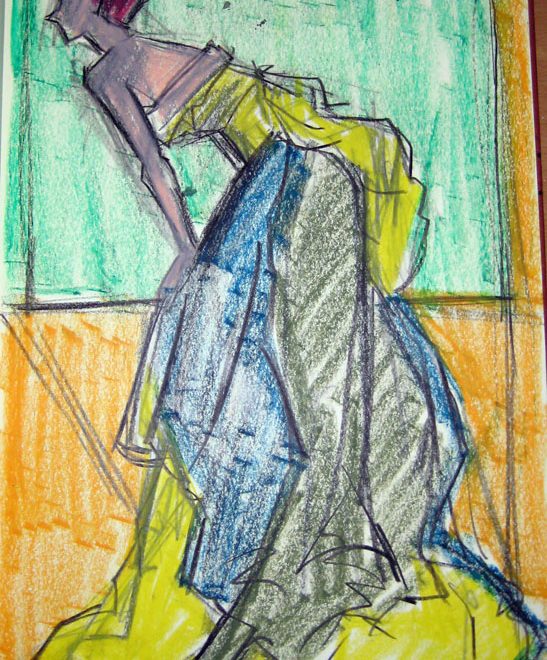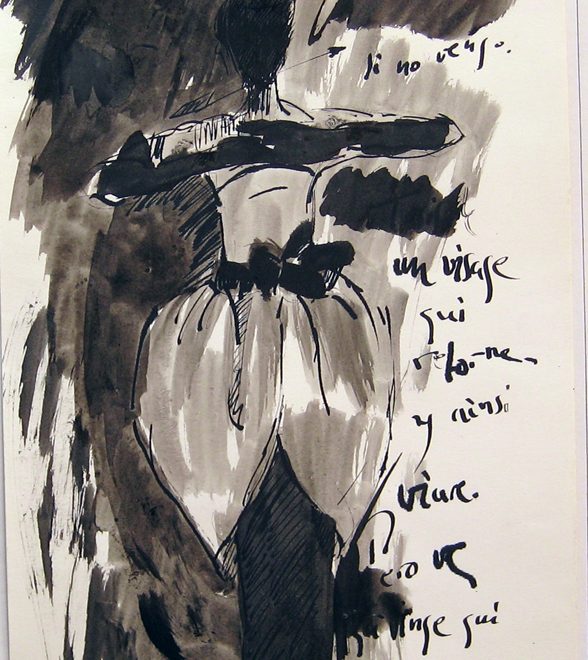Javier Calvo
Geometry and fashion
Calvo clearly did not wish to remain trapped in geometrical forms and he needed to introduce references to emotional places. The stylistic quality of the landscape that he has developed, with origins in Romanticism, touches on truly original ideas. The decisive feature is his obsession with capturing the force and intensity of natural phenomena, but what he wants most of all is to retain the vital presence of painting. In the Malvarrosa series (1977–79), Javier Calvo attempts a poetic recovery of childhood, using a new kind of figuration and achieving a humanisation of his language when compared to his previous abstract vocabulary. These works are images for the memory that transmit profound nostalgia, combined – as always – with the pleasure of painting. His retrospective emotions are counterbalanced by a certain tone of serenity. The series on glamour and fashion, a field for which Javier Calvo has a tremendous weakness, is undoubtedly the one that has enabled him to offer his most mature syncretic ideas. Javier Calvo’s relationship with the “empire of fashion” is wide-ranging, in his practice as an artist and as a teacher. One of the first and most important examples is the Glamourosas series that he presented at La Gallera in 1995. “The way in which he makes clothes the main feature,” as Mara Calabuig says, “without ties or obligations, yet keeping well away from a merely documentary temptation, is a great artistic revelation in this unusual exhibition. Javier Calvo deliberately erases faces and ignores anatomies, disclosing fashion in its full force, its constructive quality, which he underlines by achieving unexpected effects of mobile architecture that have complete autonomy and a penetrating power of suggestion.” His discoveries of texture, composition and gesture have expanded from the time of the Glamourosas series to the paintings that he is presenting at the IVAM. He has expanded his reflection on the pose, with all the sense of theatricality that it entails, situated somewhere between stillness and excess, between delicacy and gentleness and striking solemnity. His paintings render a meticulous tribute to the great photographers and designers who devoted their imagination to this world of material and folds, beautiful bodies and fascinating presences. Fashion, uniting the ephemeral and the eternal, the very pulse of modernity, reappears in the museum to seduce us in its subtlest way.








